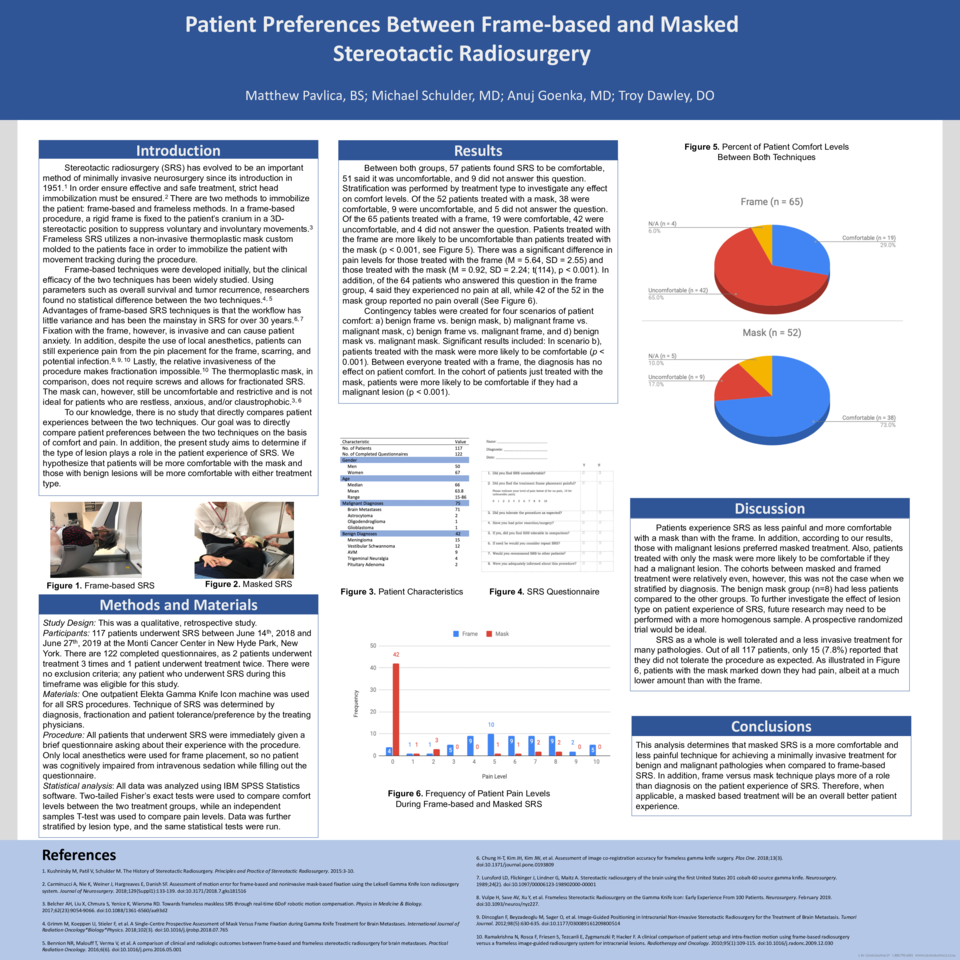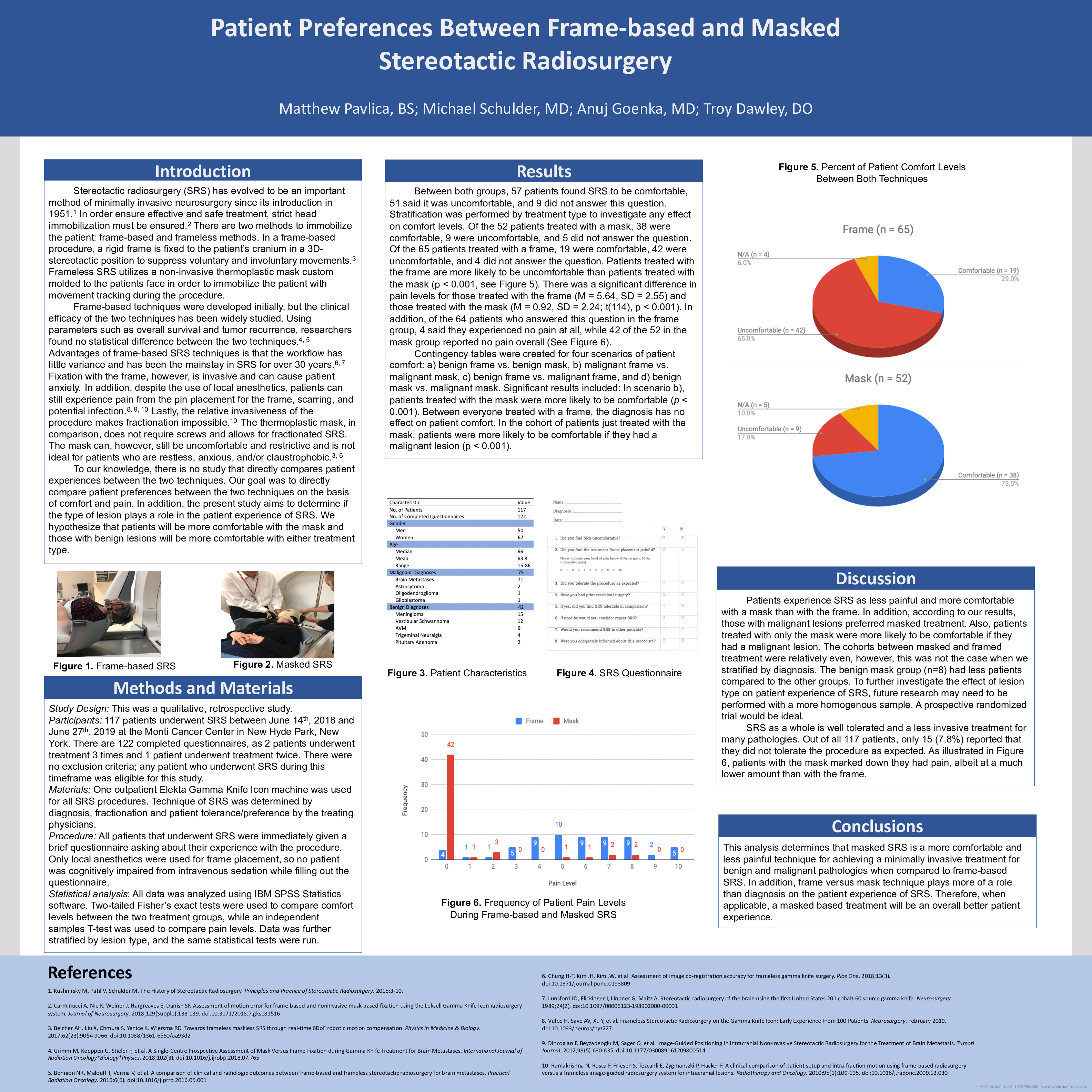Abstract
Objective: We sought to compare patient perceptions of frame-based (FB) and mask-based (MB) SRS with respect to comfort and pain, and to examine possible effects of lesion type in the patient experience of SRS.
Methods: Over a one-year period, patients who underwent FB or MB SRS at our institution were given an eight-question survey about their experience with the procedure immediately after treatment was completed. Descriptive statistics were applied.
Results: A total of 117 patients completed the survey with 65 FB and 52 MB SRS treatments, all on the same treatment platform. Patients having FB SRS (M = 5.64, SD = 2.55) found the procedure to be more painful than those treated with MB SRS (M = 0.92, SD = 2.24), p < 0.001. Patient comfort during the procedure was also higher for those having MB SRS (p < 0.001). Mixed results were obtained when investigating if benign vs. malignant diagnosis affected patient experience of SRS. Diagnosis played no role on pain levels when all patients were analyzed together. The treatment technique had no effect on patient comfort in patients with benign diagnoses. When malignant pathologies were analyzed, patients treated with the mask were more likely to be comfortable (p < 0.001). Between only FB treatments, diagnosis played no role on patient comfort. When only MB treatments were analyzed, patients were more likely to be comfortable if they had a malignant lesion (p < 0.001).
Conclusions: Patients treated with MB SRS experience the procedure as more comfortable and less painful compared to those treated using a frame. Overall, this difference was not affected by a benign vs. a malignant diagnosis. However, within diagnosis groups, patients with benign pathologies had equal comfort with both treatments, while those with malignancies preferred MB SRS.





